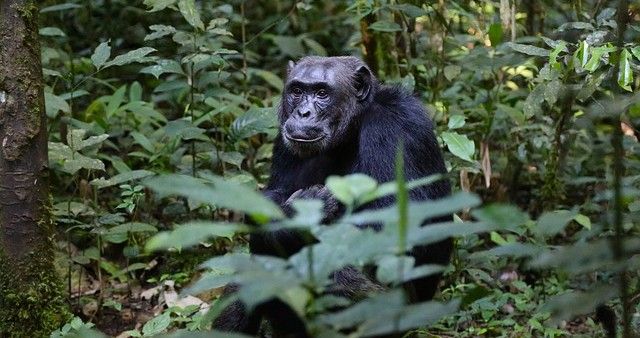
The research goal is to study the behaviors and social organization of two chimpanzee communities found in the north west section of the park.
This national park is about 20 times larger than Gombe Stream National Park. The park covers an area of 623 sq. miles (1613 sq. km). The terrain is mostly rugged and hilly and is dominated by the Mahale Mountain chain that runs across the middle of the park (roughly northwest to southeast). The mountains get more rain than elsewhere, a difference of 1400mm to 1870mm annually. Woodland covers about three-fourths of the park, with narrow strips of riverine forest restricted to watercourses.
Some researchers have compared the cultural differences between the chimpanzees at Gombe and those of the Mahale Mountains. Even though there was a close resemblance, there were differences as well. For example, the dietary differences were obvious. Whereas the Gombe chimpanzees rely heavily on palm nuts, the Mahale chimpanzees eat no part of the palm tree. Mahale also has a much richer population of plant species compared to Gombe. The two cultures also use tools differently. Gombe chimpanzees often probe for termites but not tree-ants and vise versa for the Mahale chimpanzees. There were also social differences. The chimpanzees in Mahale, when grooming mutually, will often groom the partner with one hand while using the other to clasp the partner's hand overhead. This is called the "grooming hand clasp" and has not been seen in the Gombe chimpanzees.
Another project focused on whether chimpanzees use different leaves and plants for medicinal purposes. The research concluded that three species of Aspilia were ingested by chimpanzees to treat intestinal parasites. The chimpanzees would take leaves, one at a time, place them in the mouth, and swallow them whole (without chewing). Observations have also shown that young chimpanzees will closely copy these techniques performed by their sick mothers or those nearby. Knowledge and experience of the appropriate plants to eat and when are passed down in the form of behavioral tradition, a process which allows many to benefit from the experience of a few.
Visit the Web page of the research center.

